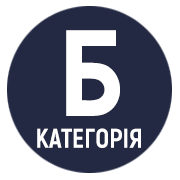IMPLEMENTATION OF BLENDED LEARNING MODELS IN HIGHER MEDICAL EDUCATION INSTITUTIONS OF UKRAINE
DOI:
https://doi.org/10.32782/eddiscourses/2024-2-6Keywords:
blended learning; models of blended learning, future masters of medicine, students of educationAbstract
The importance of training future masters of medicine in the conditions of blended education, which involves an effective combination of various forms and methods of work in classes and extracurricular work, is shown. The factors of the qualitative introduction of blended learning into the educational process of training future specialists based on the use of various models and methods of blended learning are discussed; personalization of training for students of higher education; adaptation of students of higher education to educational activities in the institution of higher medical education in the conditions of implementation of blended education; teachers have experience in implementing different models of blended learning into the educational process; taking into account the level of training of students of higher education when choosing a model of blended education. It was confirmed that the introduction of blended learning into the educational process of training specialists is an effective way of organizing educational activities in educational institutions, as new opportunities are created for the access of education seekers to educational resources and the organization of the educational process with the use of a greater variety of forms, methods, means of education and approaches to his organization. We found that a combination of such blended learning models as “Flex” and “Face to Face Driver” gave the best results. The “Flex” model was used to study theoretical material, i.e., students of higher education independently studied the lecture material, and only complex issues of the topic were discussed during video consultations. The “Face to Face Driver” model was implemented during practical classes, using virtual laboratories, interactive applications, and cloud services. Technologically, the implementation of blended learning in the educational process was carried out by us with the help of modern communication technologies and devices that made it possible to present educational information in electronic form, to communicate with all participants in the educational process using the organization of video conferences, to ensure their work with electronic educational resources and to conduct surveys and testing As evidenced by the results of the survey of higher education applicants of O.O. Bogomolets, most of them point to the perspective of the introduction of blended learning, because, in their opinion, it allows you to organize your own learning activities in a specific discipline at any convenient time and in any place, when the necessary information for learning is constantly available, which expands their opportunities to acquire knowledge and develop skills. For this purpose, we have proposed a universal structure of electronic training courses, which necessarily contains educational and methodological materials that provide conditions for effective educational activities; the basic requirements for their development are defined. The implementation of electronic training courses in the educational process of training future masters of medicine made it possible to implement several models of blended learning, provides constant access to educational information, creates opportunities for acquiring knowledge and forming subject skills at a convenient time, allows presenting information in various formats (text documents, presentations, video, etc.), increases the transparency of the evaluation system (especially in the process of conducting testing in an online format and automatically assigning points). We believe that the introduction of blended learning into the educational process increases the motivation of students of higher education, creates opportunities for studying at a convenient time, teaches to manage one's time, and opens new ways of presenting educational material.
References
Бугайчук К. Л. Змішане навчання: теоретичний аналіз та стратегія впровадження в освітній процес вищих навчальних закладів. Інформаційні технології і засоби навчання. 4. 2016. С. 1‒18.
Теорія і практика змішаного навчання : монографія / за ред. В. М. Кухаренко. Харків : Міськдрук, НТУ «ХПІ», 2016. 284 с.
Коротун О. В. Методологічні засади змішаного навчання в умовах вищої освіти. Інформаційні технології в освіті. 3. 2016. С. 117‒129.
Мізюк В. А. Змішане навчання як інноваційний підхід інтеграції навчального процесу у закладах освіти. Науковий вісник МНУ імені В.О. Сухомлинського. Педагогічні науки. 3 (66). 2019. С. 172‒177.
Ткачук Г. В. Теоретичні і методичні засади практично-технічної підготовки майбутніх учителів інформатики в умовах змішаного навчання. (автореф. дис. … докт. пед. наук: 13.00.02). Національний педагогічний університет ім. М. П. Драгоманова. Київ, Україна. 2019.
Барна О. В. Технологія змішаного навчання в курсі методики навчання інформатики. Відкрите освітнє е-середовище сучасного університету. 2. 2016. С. 24‒37.
Рашевська Н. В. Мобільні інформаційно-комунікаційні технології навчання вищої математики студентів вищих технічних навчальних закладів. (автореф. дис. … канд. пед. наук: 13.00.10). Інститут інформаційних технологій і засобів навчання НАПН України. Київ, Україна. 2011.
Michael B. Horn and Heather Staker. Blended: Using Disruptive Innovation to Improve Schools. San Francisco : Jossey-Bass. URL: https://www.christenseninstitute.org/blended-learning-definitions-and-models/ 2014 (дата звернення: 05.12.2023).
Наливайко Н., Наливайко О. Змішане навчання в медичних закладах вищої освіти. Освітологічний дискурс, 32 (1), 2021. С. 101–111. https://doi.org/10.28925/2312-5829.2021.1.7 (дата звернення: 06.12.2023).
Положення про організацію дистанційного навчання в НМУ імені О. О. Богомольця. URL: https://drive.google.com/file/d/1D5I7c6YioTU6EAt8sc1F9yAu-J_iTRg5/view (дата звернення: 03.12.2023).







